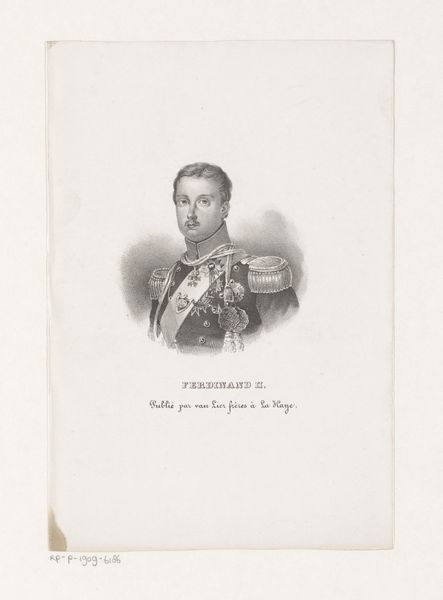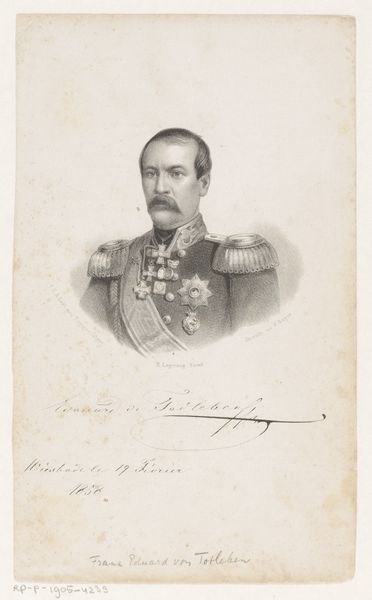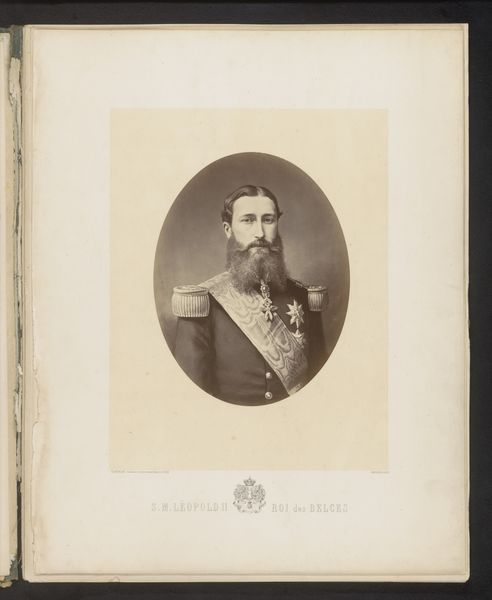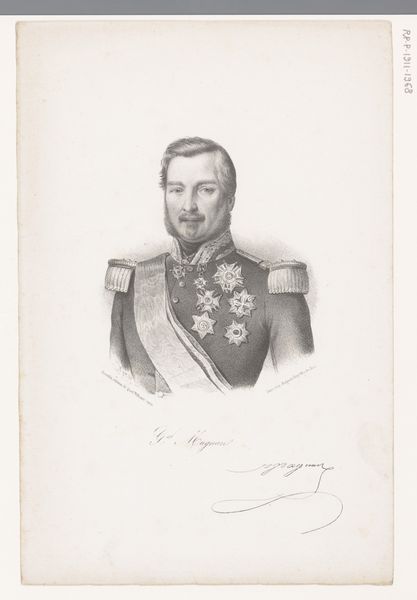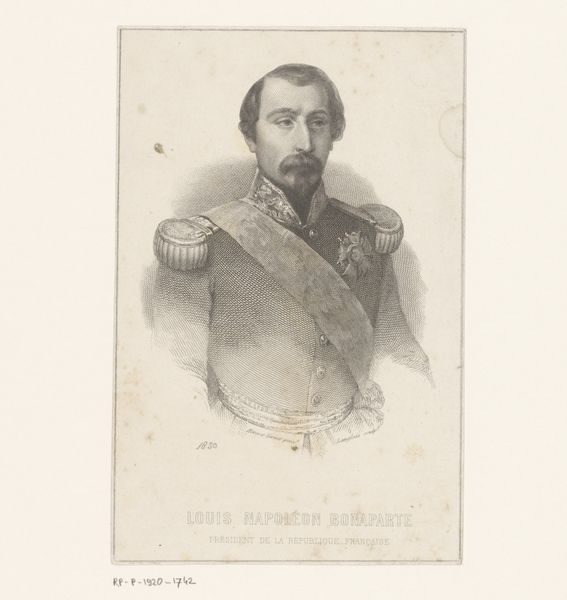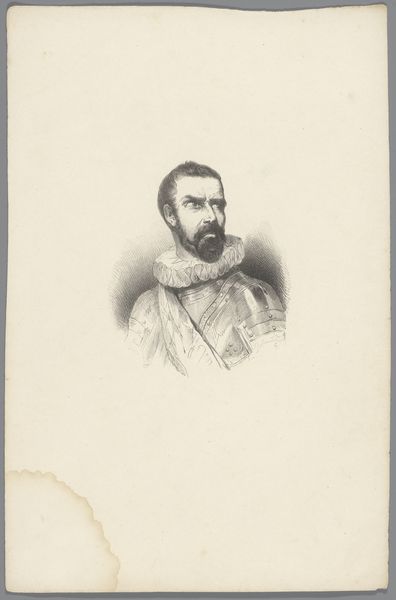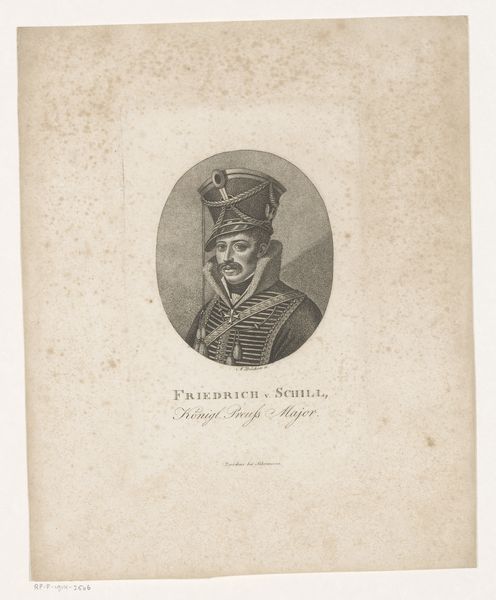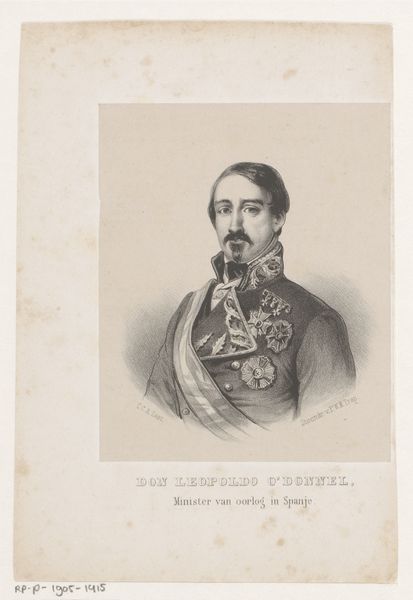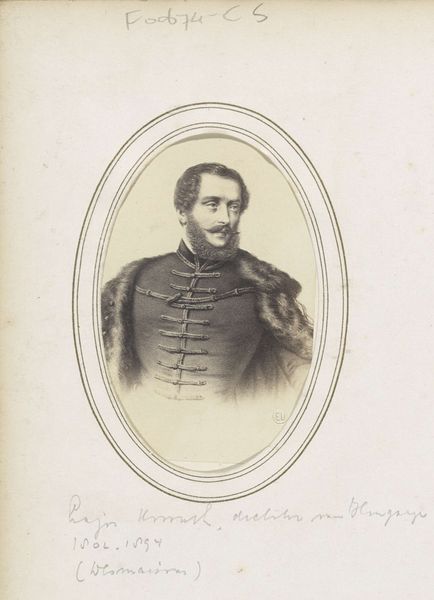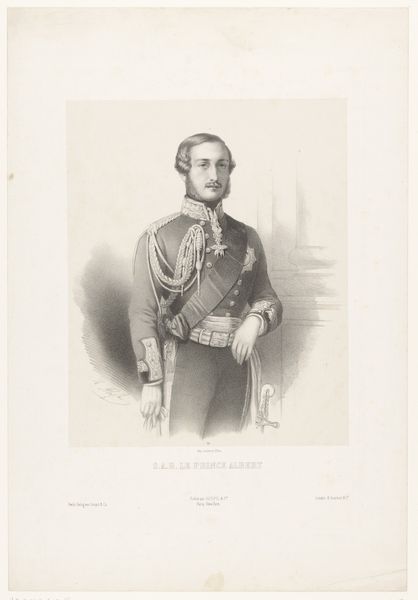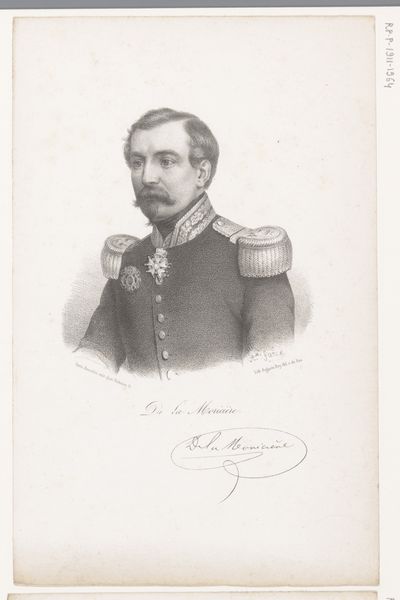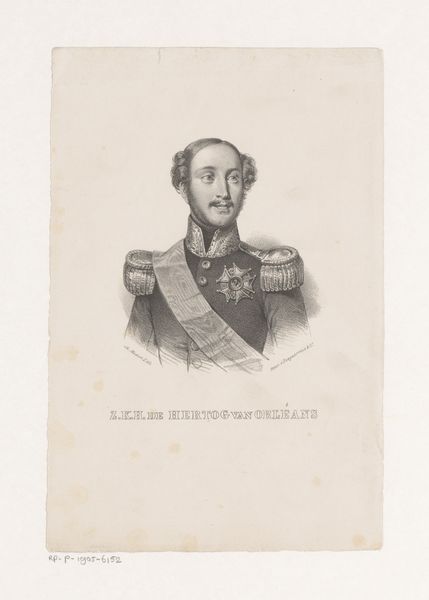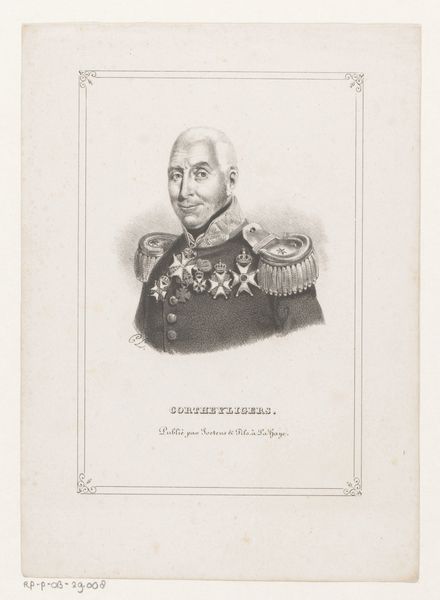
print, engraving
#
portrait
# print
#
old engraving style
#
romanticism
#
history-painting
#
engraving
Dimensions: height 280 mm, width 200 mm
Copyright: Rijks Museum: Open Domain
Curator: This is a portrait of Ferdinand Maria of Savoy-Carignano, produced as a print in 1848 by Luigi Mantovani. It's a fascinating example of romantic portraiture. Editor: My first impression is one of restraint despite the finery. The monochromatic palette and the meticulous engraving lend a formal air. Curator: Absolutely. Engravings like this were a powerful tool for disseminating images of authority and solidifying dynastic identities. Look at the precision in rendering his uniform; the details become symbolic of his power. The medals, the sash—each an icon in its own right. Editor: Yes, the distribution of light is interesting. There's a softness around his face that contrasts sharply with the precise delineation of his attire. Almost as though we are meant to observe an inner persona, distinct from external office. The figure dominates, positioned at the work's center with surrounding negative space forcing a concentrated visual encounter. Curator: Precisely! It highlights the tension between his public persona and inner self, the very thing that romanticism sought to explore. The laurel wreath motif could evoke both victory and perhaps, aspirations linked to classical ideals. He embodies the complicated spirit of the era in which liberalism, nationalism, and tradition were in contention. Editor: There is almost a lack of dynamic tonal contrast that seems almost too simple considering the highly ornamented sitter; it’s interesting how Mantovani employed light. What do you see when you reflect on Mantovani’s overall compositional choice? Curator: Considering Mantovani’s historical placement, perhaps Mantovani had to walk the fine line between realism and artistic idealization to achieve that very image: a prince representing duty in service, embodying romantic yearning, and perhaps nostalgia too. Editor: That seems probable to me. On second viewing, it's compelling how the artist uses this medium to capture both the sitter's individual likeness, yet also embody cultural identity and legacy that would resound in his time.
Comments
No comments
Be the first to comment and join the conversation on the ultimate creative platform.
